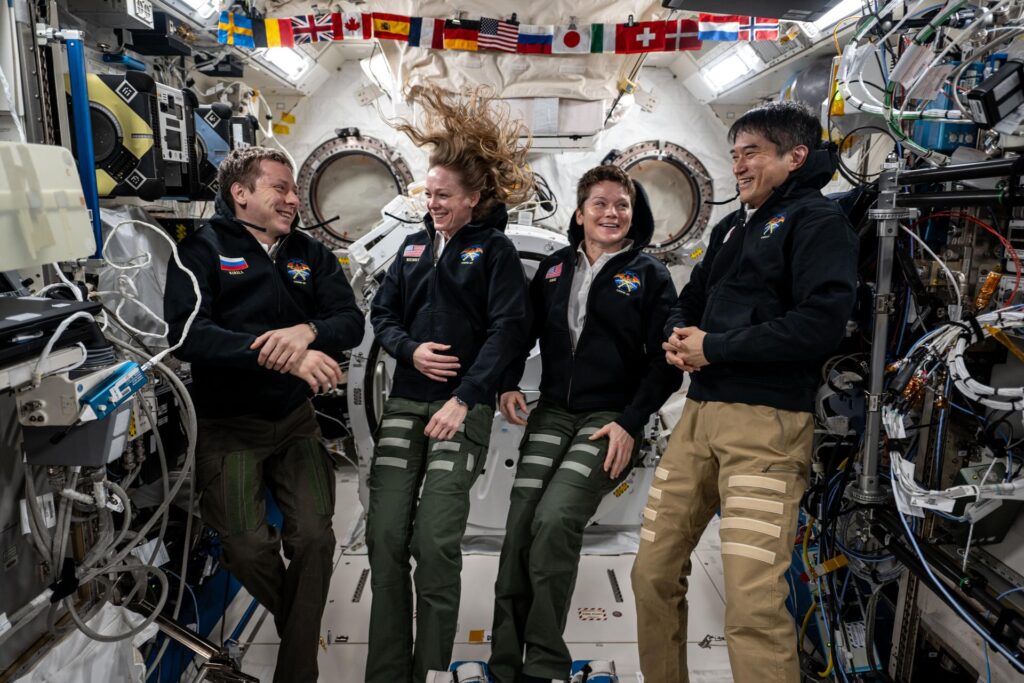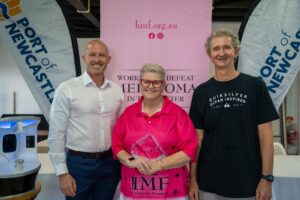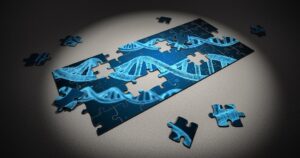
NASA’s SpaceX Crew-10 mission, featuring astronauts Anne McClain and Nichole Ayers from NASA, Takuya Onishi from JAXA (Japan Aerospace Exploration Agency), and Kirill Peskov from Roscosmos, is set to return to Earth in early August. This mission, a long-duration stay aboard the International Space Station (ISS), has been pivotal in advancing scientific research and technology demonstrations, pushing the boundaries of what is possible in space exploration.
During their time on the ISS, the Crew-10 team conducted numerous experiments, contributing significantly to our understanding of various scientific phenomena. These experiments not only aim to improve life in space but also have potential applications on Earth.
Breakthroughs in Space Botany
One of the key experiments involved studying the effects of microgravity on plant growth. The Rhodium Plant LIFE experiment, which included wild-type and genetically-modified thale cress plants, sought to understand how radiation and gravity at different orbital altitudes affect plant development. This research is crucial as it could lead to enhanced agricultural techniques both in space and on Earth.
According to NASA, “Microgravity affects growth rates, and understanding these mechanisms could revolutionize how we cultivate plants in various environments.” The data collected from Crew-10 will be compared with findings from the Polaris Dawn mission, which ventured deeper into space.
Technological Innovations and Spacewalks
A significant highlight of the mission was the installation of the International Space Station Roll-Out Solar Array (IROSA) by astronaut Anne McClain. These arrays are more compact and efficient than their predecessors, enhancing the power available for scientific research on the ISS. The IROSA technology, first demonstrated in 2017, represents a leap forward in sustainable energy solutions for space missions.
Meanwhile, Nichole Ayers conducted experiments in the Space Automated Bioproduct Laboratory, focusing on microalgae. This research could pave the way for sustainable food sources during long-term space missions, offering alternatives to traditional meat and dairy products.
Observing Earth from Above
From their vantage point over 250 miles above Earth, Crew-10 members captured stunning images of natural phenomena, such as simultaneous lightning strikes during thunderstorms. These observations are part of ongoing studies to improve atmospheric models and weather predictions, which are crucial for protecting communication systems and aircraft.
Furthermore, the APEX-12 investigation, involving astronauts Takuya Onishi and Nichole Ayers, examined the effects of space radiation on telomeres in thale cress plants. Telomeres are DNA sequences that protect chromosomes, and their study could shed light on aging and disease processes, offering insights into how organisms can withstand the stresses of space travel.
Exploring New Frontiers in Health and Science
The mission also focused on health monitoring and biotechnological advancements. The ELVIS fluorescent microscope aboard the ISS captured the motion of microscopic organisms in 3D, a technology with potential applications in water quality monitoring and pathogen detection both in space and on Earth.
In another experiment, the Cell Gravisensing investigation aimed to understand how cells sense gravity, which could lead to therapies for muscle and bone conditions like osteoporosis. This research is vital for maintaining astronaut health during extended missions.
Additionally, the Ring Sheared Drop device, used by Nichole Ayers, facilitated the study of protein fluids in microgravity. This research could enhance pharmaceutical manufacturing processes, leading to the development of next-generation medicines.
Looking Ahead: Implications and Future Missions
The Crew-10 mission has set the stage for future explorations, demonstrating the potential for in-space production of pharmaceuticals and other materials. The Advanced Space Experiment Processor-4 was pivotal in crystallization research, which could revolutionize drug manufacturing in space.
As the mission concludes, the insights gained from these experiments will inform future missions and contribute to the broader goals of space exploration. The Crew-10 mission exemplifies the collaborative spirit of international space agencies, working together to unlock the mysteries of space for the benefit of humanity.
With their return to Earth, the Crew-10 team leaves a legacy of scientific achievement and technological innovation, inspiring the next generation of explorers to continue pushing the boundaries of what is possible.







